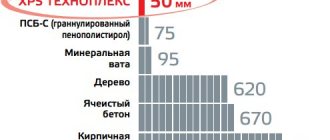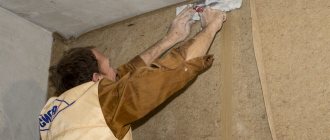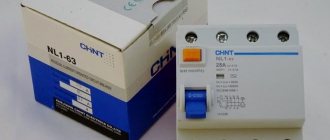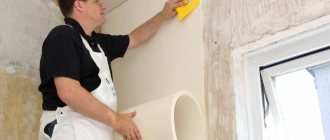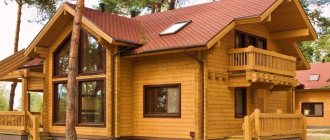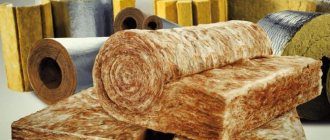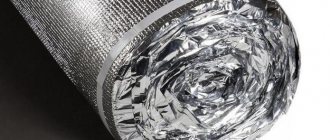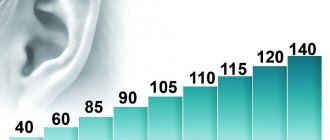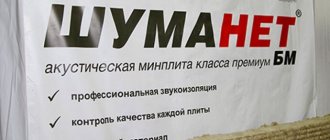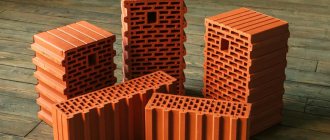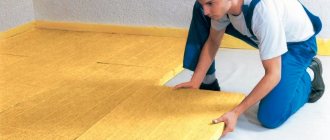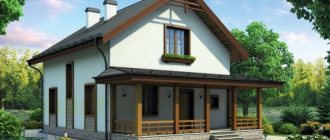When construction of a facility is underway, the issue of sound insulation often arises. To solve the problem, there are many different materials that differ in composition, characteristics and features. Euroblocks are considered one of the effective means today. Today, many manufacturers of insulating materials offer this product, as it is actually effective and affordable.
@EvroBlok
As you know, there are two types of noise: airborne and vibrational. Considering the structure of the material, we can confidently say that it will cope perfectly with both types of noise. The porous structure of the material provides effective protection with a small thickness of the insulating layer. It is worth noting that to effectively protect a room, an integrated approach is required, that is, it is necessary to treat not just one surface in the apartment, but all the walls, floor and ceiling, only in this case can the expected result be achieved. This material will tell you how to install sound insulation.
Also, do not forget that Euroblocks are suitable not only as effective sound insulation; the porous structure will also protect the house from frost, thanks to its thermal insulation properties. The material is made on the basis of polymer components, which makes it much more durable than natural insulation materials.
Where and how to use Euroblock sound insulation
Sound insulation Euroblock consists of sheets with a thickness of 20 - 50 mm. A feature of the material is the heterogeneity of the densities of its layers. They are made of polyethylene foam and limit vibration and noise as much as possible due to their heterogeneity. Different thicknesses and densities make it possible to increase resistance to the propagation of sound waves and reduce resonance. Euroblock allows you to isolate 56 dB of sounds.
Sound insulation Euroblock 20 mm 0.6x1 m
Place of use. Ceiling, Floor, Wall. Country of Origin. Reviews Reviews Overall rating. This product is recommended. Leave feedback. Show first. Term of use:. Overall rating:. Reply 0 0. Show comments Hide comments. Kadyrova Christina. Good afternoon, Oleg! We thank you for your honest feedback. We are glad that you were satisfied.
Sincerely, Leroy Merlin.
PenoHome Euroblock material line: sound insulation of a city apartment
Frequency of use:. I bought it in a car to replace wet foam rubber under the carpet, it’s easy to shape into the desired shape, does not absorb moisture, and does not press through. True, it became noisier in the car. Reply 1 1.
Code: Sheet heat and sound insulating material. Designed for basic or additional insulation and sound insulation of enclosing structures in low-rise or private housing construction, for heat, hydro, steam and sound insulation of walls, insulation of doors.
Reply 5 2. I tested the effect like this: I turned on music on my smartphone and pressed the speaker tightly against the Euroblock noisemaker - The music actually becomes quieter. But the price is different there too. The Eurobloc is worth the money, but don't expect miracles. These are just foamed plastic bags. Cheap, lightweight, can be used, for example, in the bathroom, which is what I did for sewer pipes, since it is not afraid of moisture, there is definitely a soundproofing effect from the use, but, of course, not wow.
Specifications:
Not very evenly cut, but not critical. I would like different thickness options. Reply 4 4. Thank you for your feedback, useful comparison with other products. Easy to attach with liquid nails!
The Euroblock really saves you from noisy neighbors! Reply 0 Saryeva Evgenia.
According to the club map Increased sound insulation is achieved by using layers of different densities and thicknesses, which creates significant specific acoustic resistance and leads to a weakening of resonance phenomena at the natural frequencies of the layers. We prepare the surface of the walls so that it is clean and dry. It is necessary to eliminate all gaps, holes and cracks - this will initially reduce the noise level.
As a rule, leveling the walls is not required, since the material is elastic and will easily hide unevenness.
The most common structures are partitions made of plasterboard sheets on a metal or wooden frame. When installing a metal profile, in places of contact with the wall, lay an elastic gasket, for example, PenoHome NPE mm sheets, having previously cut them to the size of the bracket profile - this will help avoid the spread of impact noise.
For additional fastening of the Euroblock material to building structures, floors, walls, and ceilings, you can use glue designed for professional installation of thermal insulation products made of foamed polyethylene, polypropylene and rubber. The elasticity of EUROBLOCK allows you to install the mats side by side between the racks; the material fits closely to the load-bearing elements of the partitions, eliminating the appearance of gaps and cracks.
Can be purchased for 39.75 points. According to the club map 5 General construction materials Dry building mixtures and waterproofing Thermal insulation and sound insulation Materials for dry construction Wood-based board materials Lumber Power tools and components Roofing, siding, drainage systems Paint and varnish materials Foams, adhesives, sealants Ceramic tiles and grouts Finishing of walls and ceilings Floor coverings Doors, windows, hardware Engineering plumbing Heating and pumping equipment Plumbing Electrical equipment Cable and accessories Climate control equipment Hand tools, workwear, household goods Fasteners Garden and seasonal goods.
Code: Sound insulation Euroblock 20 mm 0.6x1 m.
Features and Benefits
Main properties of the material:
- The main property of the Euroblock is the insulation of premises from extraneous noise.
- In addition to noise suppression, Euroblock is capable of providing thermal insulation.
- The material is resistant to physical aging or rotting.
- Can be in an aggressive environment and fully perform its functions.
- Durability. The minimum service life of the material is 20 years.
- The technology for laying the Euroblock does not involve the use of personal respiratory protection equipment. This is ensured due to the environmental friendliness of the material.
- The slabs are well suited for installation in any room and on any surface. Thanks to the versatility of the Euroblock, it can be used to soundproof the entire house.
- The standard size of the material allows it to be easily laid on any surface.
Disadvantages of aerated concrete houses
- Even the construction of a one-story house made of aerated concrete must be accompanied by a significant number of calculations. The higher the number of floors of the building, the more reasonable these calculations should be. When building a 2-3-story house, it is unacceptable to use aerated concrete as the main load-bearing material. As an option, the masonry of load-bearing walls is made from aerated block of a grade higher than D 600. However, the higher the grade (density of aerated concrete), the lower the thermal insulation properties. Which leads to the need to insulate the structure. The solution may be to lay the wall in two rows with dressing. The outer part of the wall is made of load-bearing dense gas blocks, the inner part is made of heat-insulating (porous and more fragile);
- A house made of aerated concrete is characterized by low thermal inertia. Inertia is the ability of the material used for construction to accumulate heat. Aerated concrete structures quickly warm up and just as quickly release heat to the environment. The thermal inertia of an aerated concrete block depends on the structure of the aerated concrete. The more pores, the lower the inertia.
- minimal deformation caused by shrinkage of the material, errors when pouring the foundation or soil movement will inevitably lead to the appearance of cracks on the aerated concrete wall. They will not cause significant damage to the structure, but will affect the visual perception of the house. As practice confirms, even if the laying technology is followed, about 20% of all blocks crack;
- A house made of aerated concrete needs finishing. Even if work is forced to be interrupted, it is recommended to preserve unfinished buildings for the winter. A newly built house needs immediate finishing due to the ability of aerated concrete to absorb moisture from the environment (moreover, the source of dampness is not only rain and snow, but also fog). Aerated concrete can withstand no more than 25 cycles (some manufacturers claim no more than 35 cycles) of freezing and thawing. This does not mean that the house will only last 25 years.
- When finishing a house made of aerated concrete, it is important to follow the order in which work begins. First, internal work is carried out. This is due to the fact that the gas block releases moisture in both directions: inward and outward. Thus, by starting plastering work from the inside, it becomes possible to reduce the humidity in the room. Afterwards the external walls can be finished.
- Any type of finishing can be used as finishing materials for a gas-block house. It's right. But the arrangement of ventilated facades is associated with a number of difficulties, the main of which is the difficulty of fastening them into aerated concrete. The facade may simply fall off over time. Based on this, the best option is to plaster walls made of aerated concrete. Moreover, you can only use special gypsum-based mixtures;
- The smoothness of the walls also plays against the craftsmen when it comes to finishing. The mixtures do not stick well to the wall. It requires double priming of the walls, sanding them with sandpaper or reinforcing them with mesh (preferably polymer);
- lime contained in aerated concrete (2.5-5%) and in some adhesive mixtures for aerated blocks (0.5-1 part of lime in the masonry mixture) leads to the fact that the metal components of the masonry become unusable after a certain time. The same fate awaits metal communication pipes;
- fasteners in aerated concrete walls do not hold well. To hang anything that has significant weight (shelf, water heater, wall kitchen cabinets), you need to use special fasteners.
Specifications
The main thing when choosing a soundproofing material will be the combination of its technical characteristics:
- The main parameter is the sound insulation index, it is up to 56 dB.
- Another important parameter is the thermal conductivity of the material. Its coefficient is 0.04 W/m*degree Celsius.
- Vapor permeability is 0.001 mg/m*h*Pa.
- In 24 hours the material absorbs 0.74% water.
- Euroblock can be used while maintaining all its characteristics at temperatures from −40 to +90 degrees Celsius;
- The inside of the material is gray or yellow.
Installation
Fastening the Euroblock to surfaces is carried out in several stages:
- First, you should prepare the surfaces of the walls and ceiling for installation. They must be cleaned of the previous coating and dried thoroughly.
- Installation of the Euroblock should ensure a tight fit of the material to the surfaces. To do this, install a sheathing on the ceiling or wall, which lags behind the surface exactly by the thickness of the sound insulation slabs.
- The Euroblock is laid, filling the entire space between the sheathing and the wall. All blocks must be laid end to end.
- For additional fastening, the blocks can be fixed to the surface using dowels and “fungi”.
- To achieve the greatest sound insulation, all seams are additionally taped.
Certificates
- The fire safety certificate confirms that the material belongs to the KM5 fire safety class.
- The hygienic certificate limits the scope of use of the material. It can be used in industrial or civil engineering, in the form of soundproofing or cushioning material, for the production of consumer goods. According to this document, it is necessary to carry out production control once every 12 months.
- The sanitary and epidemiological report confirms compliance with GN rules 2.1.6.1338-03 and 2.1.2.729-99.
Standard sizes
When choosing a soundproofing material, it is necessary to accurately select its dimensions. All Euroblock products are produced in the form of mats of a given thickness and size:
- The thickness of the mat varies from 20 to 50 mm, in increments of 10 mm;
- The width of all mats is the same and is 600 mm;
- The length also does not differ and is equal to 1000 mm;
- One package of mats with a thickness of 20 mm will contain 20 pieces, 30 mm - 13 pieces, 40 mm - 10 pieces, 50 mm - 8 pieces. we can conclude that the height of each package will be 400 mm.
Thanks to the standard size for all products, installation and construction planning can be significantly simplified.
Recommendations for use
For different purposes you will need Euroblock mats of different thicknesses:
- for hydro- and thermal insulation of foundations, slabs with a thickness of 20 mm or more will be sufficient;
- Euroblock with a thickness of 20 mm will protect unheated loggias and balconies from freezing and ensure their hydro- and sound insulation;
- materials with a thickness of 30 mm or more will ensure sound insulation of facade walls and roofs;
- the thickest mats will be used to provide heat on a heated balcony and soundproof interior partitions or load-bearing walls.
Soundproofing euroblock reviews
Mil_D Well, tell me, how do you insulate the ceiling? Will you stick some kind of vibroplast on it? And what will this give you? — The reinforced concrete slab is too massive to extinguish the standing wave.
If you have a great desire to build yourself a zero acoustic cabin, then only the “room within a room” option is suitable, here is an excerpt from an interview with one professional person:
“In conditions of massive thick walls made of brick and concrete, good insulation of airborne noise is achieved, but structural noise cannot be avoided, since powerful structures are good conductors of vibrations (for example, from an elevator). Therefore, when designing such walls, it is necessary to make vibration-decoupled junctions between the wall and the floor and ceiling. In such cases, you can achieve very good sound insulation, reaching up to 70 dB.
Customer review:
I think all these new materials are complete bullshit. The house needs to be built only from bricks. I would build myself out of red brick. Our ancestors were not fools; they knew how and what to build from. But if you have neither intelligence nor money, then a foam block is better. At least it’s clear what it’s made of and won’t dissolve in the rain. I myself built a garage box from this material. At that moment there was no money for normal materials, and there was no time. Interestingly, the blocks were delivered on the same day, I paid on the spot, it was convenient. The ceilings were made from logs, boards and rolled metal. I reinforced the gate so it wouldn't fall off. It turned out cheap and cheerful. You can park the car. Of course, I wouldn’t live in such a barn, but who knows.
Answer:
Vladimir Timofeevich, good afternoon! Thank you for your feedback, feedback from each of our clients is very important to us! But let me disagree with you a little... Not everything new is bad and without progress we would now be living in the Stone Age. We agree that the construction industry is very conservative, and that everything new is perceived with hostility, especially by builders who have been working on construction sites for 20 or 30 years. But just look at sand-lime brick: it’s a heavy, cold material, construction from it turns out to be very expensive, since you need a very strong foundation, expensive masonry work, a huge amount of masonry mortar, special equipment for installation, expensive delivery, and in the end the house turns out to be very cold and it still needs additional insulation, but it has the strength to build a 10-story building. What's the point if they most often build 2- and 3-story houses? Perhaps earlier brick was so cheap that it paid for all these disadvantages, but now with the advent of cellular concrete, the cost of construction has been reduced by 30-40%, while the houses are very warm, durable, and environmentally friendly! We also agree that there is a lot of “raw meat” on the market now, but if you work with a plant that undergoes annual certification tests, where there is product quality control, etc., then where is the risk? By the way, foam concrete has been actively used in Russia since the early 80s, and in Germany since the 50s, and its properties and qualities have already been time-tested and approved by construction institutes and laboratories, so in our case this is not something new, but a well-proven material, despite the fact that now it has no analogues in terms of its effectiveness!
Review: Sound insulation Izoplat is a good sound insulation, but if we did it ourselves, we wouldn’t buy it.
In July of this year, we finally got to the ceilings during the renovation. We decided to make tension ones, which I have already talked about, since new electrics were running along the ceiling, and in order to somehow isolate ourselves from the noisy upper neighbors, it was decided to soundproof the ceilings. I honestly tried to do this myself in the kitchen and hallway, but I was so exhausted with them because of the bunch of wires that I decided to entrust the soundproofing in two rooms to professionals. You can read how they worked in my review of “Decor” stretch ceilings.
Euroblocks for soundproofing walls: nuances of application
During the construction of a particular facility, the issue of sound insulation arises, which can be solved in different ways. For example, there is an option to use so-called Euroblocks. Many modern manufacturers actively offer this type of product.
Peculiarities
Euroblock is a sheet laminated material. The layers of this product consist of polyethylene foam, which comes in different densities. It is due to this that increased noise insulation is ensured, and external sounds will no longer interfere with your quiet life.
It is worth mentioning separately that PenoHOME blocks are designed not only to solve the problem with external noise, but are also excellent as a material for thermal insulation. The main feature of these products is that by using these blocks during construction work, you can easily solve several problems at the same time.
Euroblock is a universal material that is perfect not only for walls and partitions, but also for the attic. In addition, the material is environmentally friendly and has a long service life.
Modern manufacturers claim that such blocks will last about twenty years.
Advantages of a house made of aerated concrete
- building a house from aerated concrete will cost less than building a house from other wall materials;
- a house made of aerated concrete is almost ideal from the point of view of environmental friendliness of living in it. The material itself has an almost minimal radiation background, due to its natural components, so being in the house does not pose a threat to residents;
- an aerated concrete house does not need insulation. It is known that the best existing insulation is air. In aerated concrete it is enclosed in small, equal-sized pores. What makes a gas block an excellent heat insulator?
- saving on home heating. An advantage arising from the previous paragraph. Such a house is warm and therefore provides significant savings on heating costs;
- aerated concrete is a lightweight material that is cut into large blocks. This imparts several positive qualities to a house made of aerated blocks: the cost of pouring the foundation is reduced, the need to use lifting equipment is eliminated, and the speed of installation increases. A house made of aerated concrete can be built in just a few weeks;
- the use of aerated concrete blocks allows you to build a house of any configuration. The gas block is easy to process, which eliminates difficulties in forming complex breaks or in designing arched openings.
Characteristics
Soundproofing a living space is important. For this reason, you should definitely take into account all the characteristics of the blocks in order to know exactly which one is suitable for your case.
As a rule, the minimum thickness of the blocks is 20 mm, and the maximum is 50-60 mm. Even with a minimum thickness, such a block can create a soundproofing effect and eliminate extraneous external noise.
The sizes of the blocks are very different: 20x600x1000 mm, 30x600x1000 mm, 50x600x1000 mm. But they all differ only in thickness, and the width and depth of the material are usually standard - 600x1000 mm. For this reason, this material is universal for installation.
Euroblocks with a minimum thickness are perfect for repairing premises such as a balcony or loggia. For insulation and soundproofing of walls, it is best to choose a material 30 mm thick, and blocks 40-50 mm thick are suitable for attics and ceilings.
Advantages and disadvantages
Undoubtedly, this material has enough advantages. Separately, it is worth noting its thermal insulation qualities. If you use these blocks during construction, you can easily solve the problem with sound, hydro and thermal insulation: insulate the ceiling and walls so that the house will be warm and cozy in any weather.
If we talk about the minuses, then sometimes you come across low-quality material from an unverified manufacturer , which cannot cope with its task and such problems as thermal insulation and noise insulation will not be solved. Therefore, we recommend listening to customer reviews and taking into account the opinions of those who have already successfully carried out repairs using Euroblocks.
Useful tips
Of course, it is not difficult to buy building materials on the market, but it is quite difficult to choose a high-quality and original product. If you plan to create reliable and durable sound insulation, you need to choose a reliable manufacturer and supplier. You can learn how to glue the material from the material proposed above.
@EvroBlok
Recently, more and more often, buyers purchase goods through an online store, which saves time and money. If you purchase products, do so from a proven and reliable supplier who has exclusively positive customer reviews. You shouldn’t trust the first one you come across, since today there are many fakes, and after a year making new sound insulation is quite difficult and not financially profitable.
Installation
Installation of Euroblocks does not require any special professional skills. If you know some of the nuances and installation methods, then you can easily handle it yourself. Before you begin installing the blocks, you should carefully prepare the surface: it must be absolutely dry and clean. In addition, you need to take care to make a sheathing on which the blocks will be attached.
The material should be mounted to the surface with the side where the reflective insulation is located. The blocks do not require any special or additional fastening. The main thing is that the installation must be done end-to-end, otherwise the ideal soundproofing effect will not be achieved.
Afterwards, it is recommended to glue all seams with construction tape, which will enhance the sound insulation effect.
For more details on the installation of Euroblocks for sound insulation, see the following video.
House made of aerated concrete - reviews from owners
In the field of individual housing construction, debate among consumers continues: what is the best material to build a house from? Particularly lively discussions are taking place around cellular concrete, in particular foam concrete and aerated concrete. Like any other material, aerated block has its supporters and opponents. And each of them gives their own arguments for and against in an attempt to defend their designated positions.
This article contains several reviews from real owners of aerated concrete houses. Practical reasoning, opinions and statements will allow you to get a more complete picture of what the pros and cons of an aerated concrete house are really relevant.
Vladimir (Moscow region)
Based on my own experience, I can recommend aerated concrete as a building material for the walls of a house. True, we don’t have a house, but a dacha. But we use it almost all year round. The building is small, 4.5x7, and warms up quickly, which is very convenient, since it is usually not heated.
Among the shortcomings, I will note the most common one - a web of cracks both along the seam and along the block. But we are still thinking about the finishing touches. Last winter the dacha stood unprotected. And I’m sure it will last this year. And then we’ll save some money and start finishing it.
Dmitry (Orenburg region)
They write a lot about cracks. A house built from aerated concrete is subject to mandatory shrinkage. But their number can be significantly reduced.
Firstly, there are three types of shrinkage.
